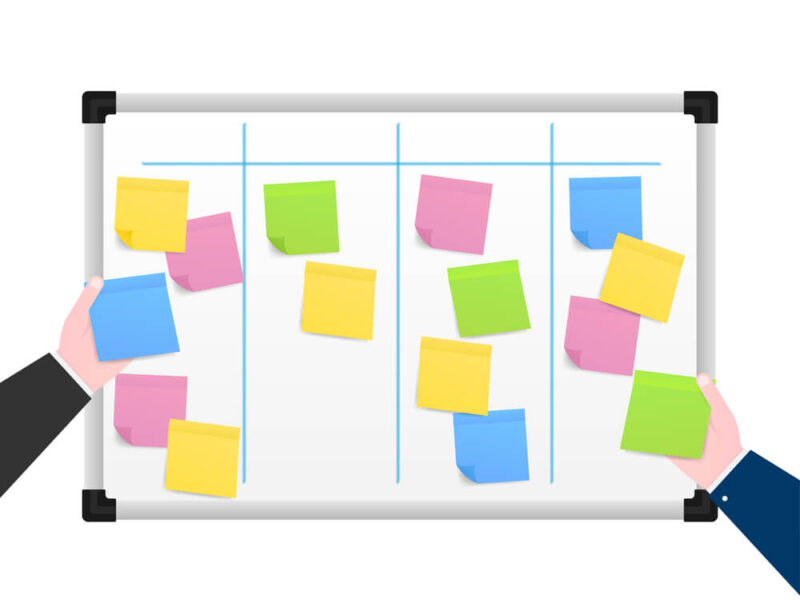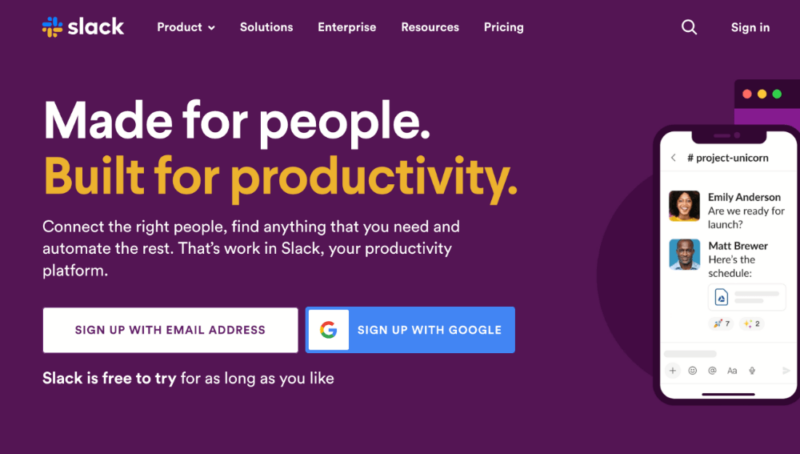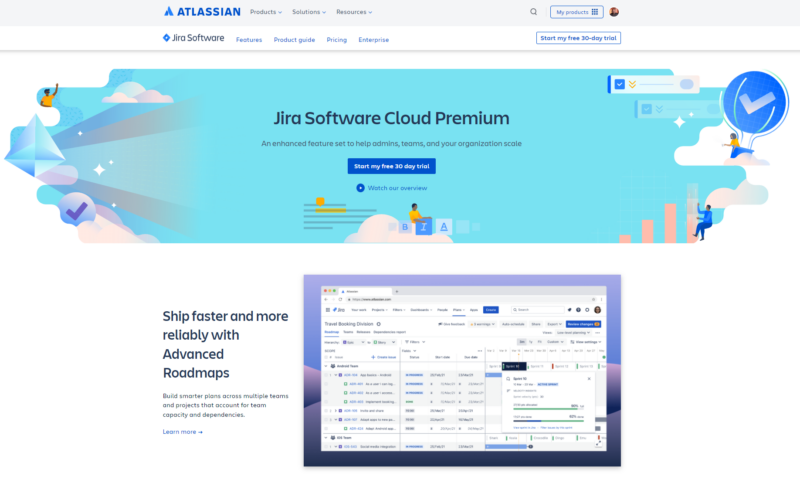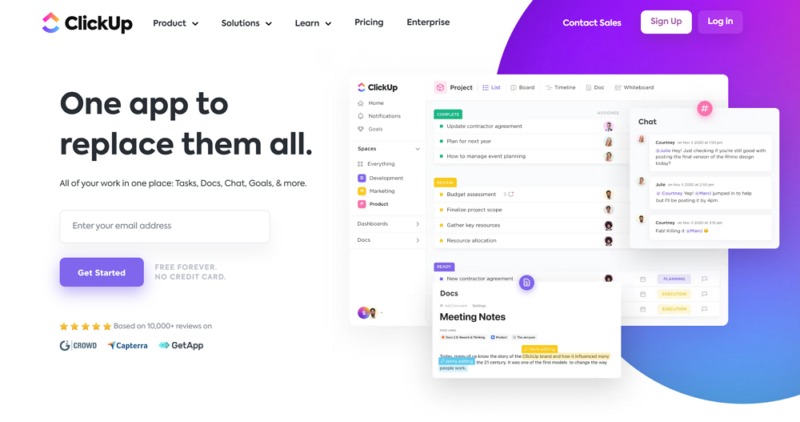What Is Backlog Refinement? 2025 Guide to Agile Terminology
Backlog refinement is essential to many Agile project management methodologies and frameworks. If you’re unsure what backlog refinement is or when a backlog meeting should be held, you’re in the right place. We’ll teach you these things and more in this handy guide.
Key Takeaways:
- Backlog refinement sessions allow teams to simplify, prioritize and prepare tasks for future sprints.
- The product owner generally runs refinement meetings, but it’s down to each team to decide who will facilitate the meeting.
- If you are looking for software with powerful product backlog tools, take a closer look at Jira and ClickUp.
Backlog refinement is a scary term that strikes fear into the hearts of new — and some experienced — Agile teams, but it shouldn’t. Backlog refinement, while critical, is simple. The word refinement means nothing more than improving upon something by making small changes. In a nutshell, this is exactly what Agile teams do during backlog refinement sessions.
In this guide, we’ll cover everything there is to know about backlog refinement, including what the meetings should look like, who should attend and what should be accomplished. As a bonus, we’ll also share some handy tips to make your next session go smoothly and some of our favorite software for sprint backlog management. Let’s get started.
What Is Backlog Refinement?
Product backlog refinement is an ongoing process used in Agile project management methodologies. Most commonly used in Scrum (check out our What is Scrum guide), a backlog refinement session sees the product owner and Scrum team members ask questions and discuss backlog items. The goal is to shrink, organize and prioritize the remaining user stories.

Once the product backlog has been refined, the Scrum team can go into the future sprint planning meeting knowing that the backlog is ready to be tackled.
Who Is in Charge of Backlog Refinement?
Typically, the Scrum master facilitates most Scrum meetings, but the product owner is in charge of the product backlog and, in most cases, will run refinement sessions. Teams do vary, though, so don’t be surprised to see a scrum master or another team member who’s an excellent communicator running the refinement process.
Scrum masters or members of the development team don’t have as high of a stake as a product owner does in the backlog and can be slightly more objective when steering the direction of the meeting. Ultimately, each team must decide who they want to run the meeting.
When’s the Best Time for Backlog Refinement?
While refinement meetings should take place during sprint reviews, you should also schedule smaller refinement sessions throughout the sprint. Get in the habit of making changes to the backlog daily, but keep discussions brief.

refinement sessions during sprint reviews.
Unlike sprint planning meetings, sprint retrospectives, daily standups and sprint review gatherings, refinement meetings are not Scrum events. Product refinement is a living, breathing process that should happen constantly and not just at one designated point in time.
When to Hold a Backlog Refinement Meeting
A formal, in-depth product backlog refinement meeting should be held during your sprint review. As sprint reviews are held at the end of the sprint, the Scrum team and your clients will better understand the tasks that still need to be completed. The team will also know how to prioritize the tasks and will be ready to receive feedback and new backlog items for the upcoming sprint.
When you schedule backlog refinement, don’t let the meeting run too long. While no strict guidelines are listed in the official Scrum Guide, refinement meetings should generally be between 45 minutes and an hour long.
What Happens in Backlog Refinement?
During refinement sessions, the Scrum team discusses and asks questions about items in the backlog. The idea is to break down the remaining larger user stories into more digestible tasks, group like tasks together, and add more details to them to ensure they meet client acceptance criteria and are ready to be worked on as soon as the following sprint starts.

be in a ready state for the next sprint.
Once the tasks have been broken down, the product owner and the development team collaborate to prioritize them. By the end of the session, the backlog should be in a ready state for the start of the next sprint, and everyone should be on the same page.
Backlog Refinement vs Backlog Grooming
You may hear teams refer to backlog management as grooming instead of refinement. They’re the same thing, but a naming change was made as the term grooming is considered inappropriate. If you hear a product owner or any team member use the word grooming instead of refinement, politely tell them to get with the times.
Why Is Backlog Refinement Important?
Refining a backlog is more than just breaking down existing tasks and user stories into more manageable tasks. During this process, teams can prioritize tasks, make space for task requests and align the team’s priorities and goals. The best Scrum teams will use this time to collaborate, organize, create work parameters and set themselves up for project success.

4 Tips to Keep Your Backlog Organized
Just like any other meeting, if a team goes into a refinement session without a plan, it will not be successful. Below are a few tips that scrum masters, product owners and development team members should keep in mind if they want to have a productive meeting.
Plan in Advance
A product refinement meeting is not something a team can just walk into and figure out. There are simply too many tasks and variables to consider. Roughly a week from the sprint review, the product owner should look at the backlog to figure out which items won’t be completed during the current sprint.

backlog tasks via in-person chat, email or tools like Slack.
Once the items have been identified, the product owner should communicate with the team through email, during a daily standup or via a tool like Slack (here’s our Slack review) to tell everyone about the remaining tasks. This heads-up will give the team time to think about the remaining tasks and formulate questions.
Ensure Your Product Backlog Is DEEP
Highly respected project management expert Roman Pichler suggests that product owners create “DEEP” product backlogs. A “DEEP” product backlog is:
- Detailed Appropriately — Highly detailed user stories are easier to prioritize than tasks with little contextual information. The more information contained within the task card, the easier it will be for the development team to pick it up and run with it.
- Emergent — A product backlog is a living, breathing tool. No tasks should be permanent. Every team member should be comfortable adding, removing and updating tasks as new information becomes available.
- Estimated — Every item in the product backlog should include information about task complexity or how much time or effort will be required to complete the job. If you’re unsure how to do this, read our Agile estimation techniques guide.
- Prioritized — Tasks in the product backlog should be prioritized by level of importance to the sprint’s goal. High-priority items should sit at the top of the backlog, while low-priority tasks should be placed further down the list.
Teams that use the “DEEP” process will find it easier to refine the backlog for upcoming sprints.
Define the Definition of Ready
The definition of ready is a set of rules that will help the team create consistent user stories. By completing the definition of ready, teams will be able to set the rules that define what information must be included for tasks to be sprint-ready. Items usually include the level of effort needed, the business value and the task objective.

Keep Meetings Timely
The product backlog refinement meeting will take place during your sprint review. Keep in mind that key stakeholders and your client will be present during this meeting and that they likely have other pressing matters to attend to.

Keep the refinement portion of the meeting on point by only including those who will work on tasks during the next sprint. Doing this will reduce confusion and chatter that may not relate to the tasks that lie ahead.
Best Project Management Software for Backlog Refinement
Below, we’ll quickly cover two of the best pieces of project management software for Agile teams who need powerful backlogging tools. Let’s take a closer look at Jira and ClickUp.
1. Jira

Pros:
- Powerful backlogging tools
- Excellent free tier
- Numerous integrations
Cons:
- Many technical terms
- No small teams discounts
- Not versatile
Jira, which made our roundup of the best Agile tools, is one of the best pieces of software for developers. It is easy to use, has a powerful product backlog that’s quick to pick up and organize, and integrates with many top pieces of software. Jira also features detailed reports and a robust free plan. Want to learn more? Take a look at our Jira review.
2. ClickUp

management methodologies, including Scrum.
Pros:
- Incredibly versatile
- Robust free plan
- Many templates & integrations
Cons:
- Steep learning curve
- Sometimes clunky interface
- Weak mobile apps
ClickUp sits proudly in our roundup of the best project management platforms thanks to its powerful tools and versatility. ClickUp is suitable for many styles of work, including Kanban and Scrum. Users will find numerous templates that will enable them to deploy product backlogs. There are also tons of reports and more tools and integrations than you can shake your fist at.
ClickUp offers one of the best free tiers around, and its paid plans are also affordable. If you’re looking for a do-it-all piece of software that can adapt to your work, take a closer look. If you want to find out what our team of experts think about the software, read our full ClickUp review.
Final Thoughts: Running a Backlog Refinement Meeting
While backlog refinement sessions might not be considered a Scrum event, they are a crucial part of the Scrum process and play a significant role in many Agile methods. Refinement meetings allow Agile teams to communicate, collaborate and organize their work, which, in the end, will make them more efficient, confident and happier.
How do you feel about product backlog refinement meetings? Who on your team facilitates the meetings, and how often do you hold them? Do you have any more tips for other readers? If so, let everyone know in the comments, and as always, thanks for reading.
FAQ
Per the Scrum Alliance, backlog refinement is the “ongoing activity to add details such as description, order and size.” In a nutshell, it covers the process of organizing and maintaining the product backlog.
The product owner and the rest of the Scrum team discuss the product backlog and ensure that it contains the correct user stories and items and that they are prioritized in order of importance.
The objective of backlog refinement is to have an organized product backlog to help make sprint planning easier.
Agile teams must have a clear understanding of the work ahead. The best way to do this is to refine the backlog.


